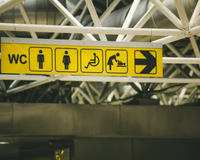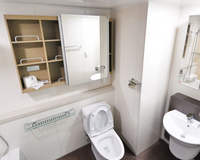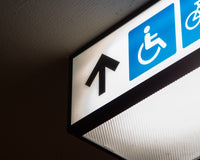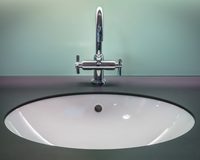Public health and safety awareness has increased drastically during the pandemic, which has led to changes in commercial offices and bathroom designs. Here are some of the biggest trends in commercial office and bathroom designs today.
Touchless Designs
Touchless designs discourage the spread of germs. Reducing the number of high-touch areas means that people won’t be as likely to touch germy surfaces that could cause illness.
In commercial offices, high-touch areas include doorknobs and light switches. New designs integrate the idea of doors not requiring a doorknob to open them, such as doors that have foot handles instead. Introducing automatic light fixtures is one way that commercial offices are beginning to reduce the amount of touch surfaces.
Bathroom designs have begun to integrate touchless products as well. The impact of COVID-19 on designs has included automatic soap dispensers, automatic paper towel dispensers, and even toilets that flush automatically or with motion sensors. Bathroom doors can also incorporate foot handles.
Social Distancing Designs
Prior to COVID-19, commercial bathrooms and offices were often crowded and encouraged people to congregate in certain areas such as kitchens or near water coolers. The introduction of social distancing has helped reduce the spread of germs and diseases.
In commercial offices especially, the impact of COVID-19 on designs has been highly focused on social distancing. Prior to the pandemic, offices were often cramped or crowded with little space in between desks or highly visited areas such as kitchens or water coolers. Offices have since spaced their desks out and changed layouts entirely in order to allow for socially-distanced working.
Bathrooms have begun to incorporate the idea of social distancing as well. Many commercial bathrooms have begun introducing gender-neutral, one-person toilet stalls, which include a toilet and sink in a single room. These stalls reduce the amount of people in one area and are easier to keep clean and germ-free.
More Nonporous Surfaces
Porous surfaces include cardboard, some wood, and even some plastics. Porous surfaces in commercial offices and bathroom designs encourage the spread of germs and mildew, as it’s harder to completely clean and disinfect the area. In commercial offices, wooden desks are not only high-touch areas, but are not easily properly disinfected. Areas with fabric or carpeting also spread germs. Offices have begun to see the removal of carpet and unnecessary fabric. Toilet roll dispensers, hand soap dispensers, and even paper towel dispensers are all high-touch areas that are better cleaned when nonporous. Luckily, most bathroom surfaces are already nonporous in commercial settings.
Choice Builder Solutions Will Help Improve Designs
The impact of COVID-19 on designs in commercial offices and bathrooms is becoming more apparent. It’s not just a trend that will come and go – it’s important to adapt to these changes. Choice Builder Solutions has the design changes you need. Visit their website today for more information!






1 comment
Olivia Robert
Amazing tips! I think most of the people did not know about it. Thanks for sharing such nice tips! I really love this blog and content is really useful. Thanks for telling us about the importance of solvency. Keep sharing this post more and more.
The DIY is very well made, extremely informative and the directions are easy to follow.